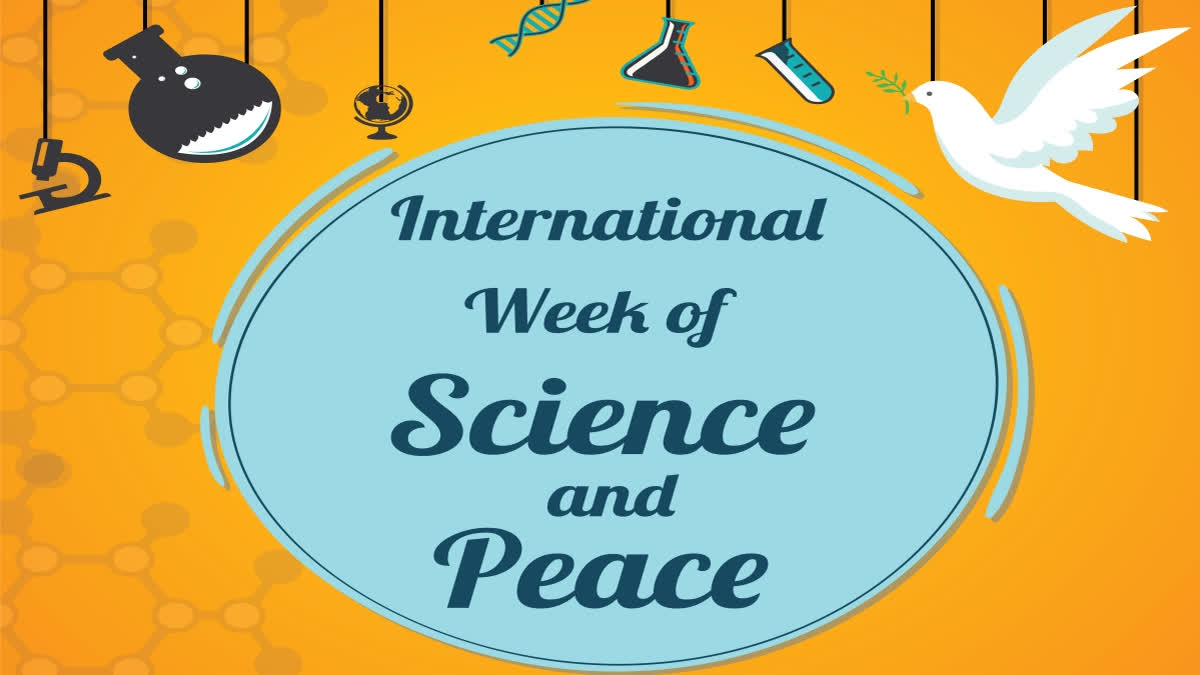Hyderabad: Science and peace are not often mentioned in the same sentence. Yet, science can play a vital role in creating the conditions for peace and in turn, allow for societies to flourish. The International Week of Science and Peace is celebrated annually from November 9 to 15. Science and technology education plays a key role in making the world more peaceful and equal for all.
History of International Week of Science and Peace
The International Week of Science and Peace had its inception in 1986 as part of the International Year of Peace. Initially, it was organised as a non-governmental initiative, and the secretariat for the International Year of Peace was informed of the preparatory activities and the events that took place during that week.
The organisers aimed to encourage broad international participation in the observance. Two years after being held for the first time, in December 1988 it was recognised as an annual celebration when it was included in resolution 43/61, adopted by the General Assembly. Thus, the "International Week of Science and Peace" was officially proclaimed and would take place every year during the week of November 11.
The spirit of (The International Week of Science and Peace ) IWOSP and UKWOSP was affirmed in a UN 'Science and Peace' resolution which addresses all the main aspects of the relation between science and peace. It affirms the role of science in:
- promoting international peace, security and co-operation
- promoting human rights
- promoting the social and economic development of mankind
- protecting the environment
Factors that Disturb Peace
Today, in an unequal world with extreme needs, science has become indispensable in the work for peace and for everything needed to care for all people, present and future. As conflicts rage and geopolitical divisions grow, peace in our world is threatened. As polarisation deepens and human rights are trampled, peace within communities is undermined. As inequalities explode, peace with justice is shattered. As we continue our addiction to fossil fuels, we make a mockery of any notion of peace with nature.
Around the globe, and across the range of issues, peace is the missing piece. People want peace and security. People want peace and dignity. There is so much anger and hate and noise in our world today. Every day and at every turn, it seems — it’s war. Terrible conflicts that are killing and maiming civilians in record numbers. Wars of words. Turf wars. Culture wars.
Need of science education for peace and harmony
Science helps us understand that we must limit our instinctive desire for power and that we must care for this great limited ecosystem that includes all the people in the world. And these limits and constraints that we discover with science can help us build peace. Today, in an unequal world with extreme needs, science has become indispensable in the work for peace and for everything needed to care for all people, present and future.
Science and technology provide us, and can continue to provide us, with resources to eradicate hunger and poverty, improve healthcare, end energy injustice and achieve the rest of the UN sustainable development goals. Tools to improve water use efficiency, distributed green energy systems, new means to tackle diseases and solutions for many other problems. Of course it can be argued that science is behind all the great advances in weapons and other war supplies, but the fact is that many tools derived from science and technology are dual use.
How is science contributing to establish peace in the world?
Here are some examples:
- Drones, for example, can save lives in mountain rescues and also kill people from a distance. We have learned to make wonderful tools, but we alone are responsible for their use. We have, and will continue to have, very powerful tools to build peace; we just need to decide to use them in the pursuit of goals that are ethical, that promote peace and care for people, and not for destruction. Because only we are responsible for these tools.
- Human and animal labor has been replaced by the work of levers and machines. Distances have shrunk as new means of travel have been invented, and communication across these distances has become instantaneous.
- Modern drugs now cure many lethal diseases. In short, the quality of life and its span have improved for most.
- Developments such as satellite television and the internet are changing both the speed at which we receive information from halfway across the planet and our access to the means of disseminating that information. This technology has had a direct impact on politics in both democratic and non- democratic countries around the world.
- And just one vaccine can protect all the world's people from smallpox, even those on opposing sides of a conflict.



